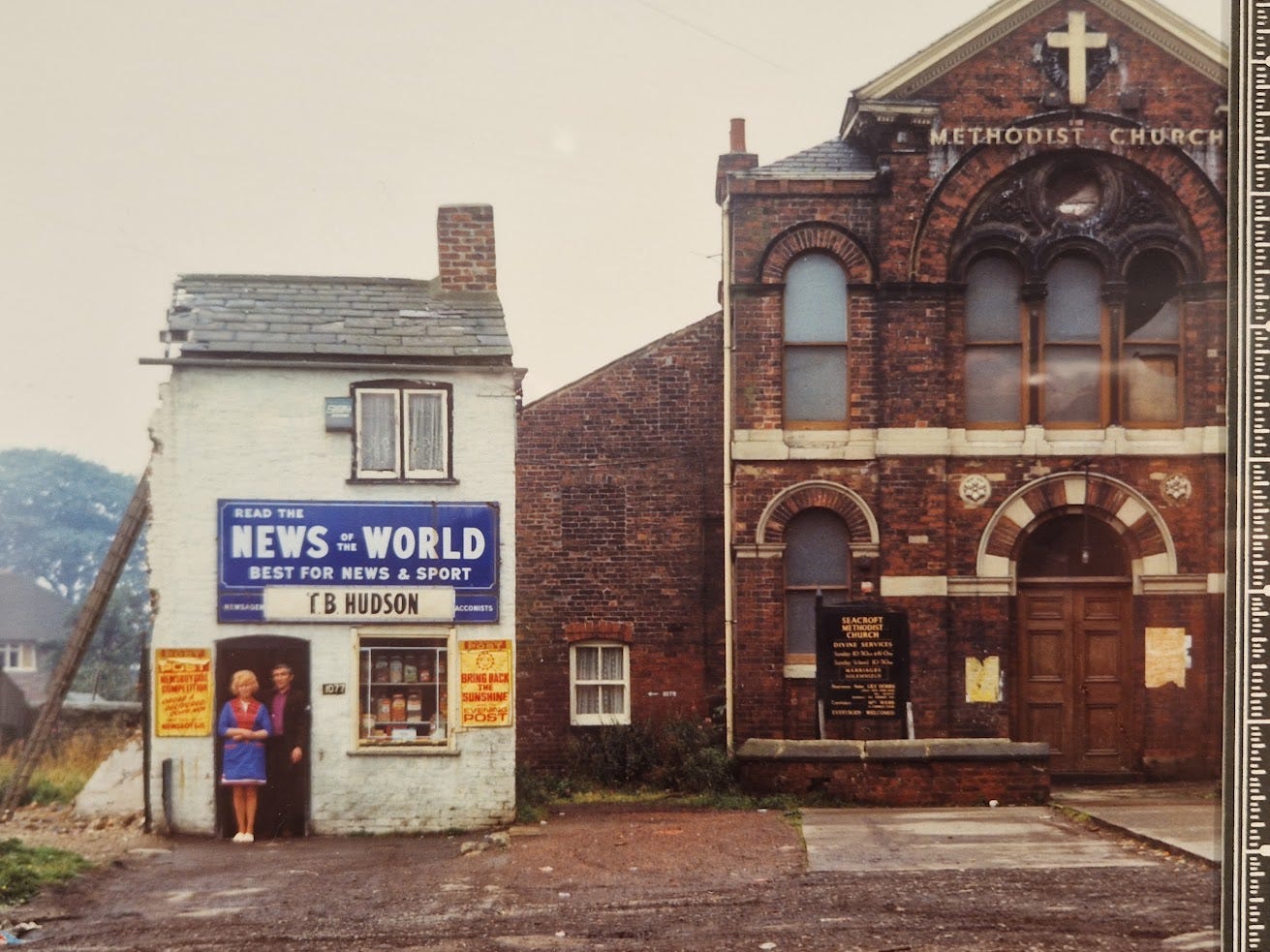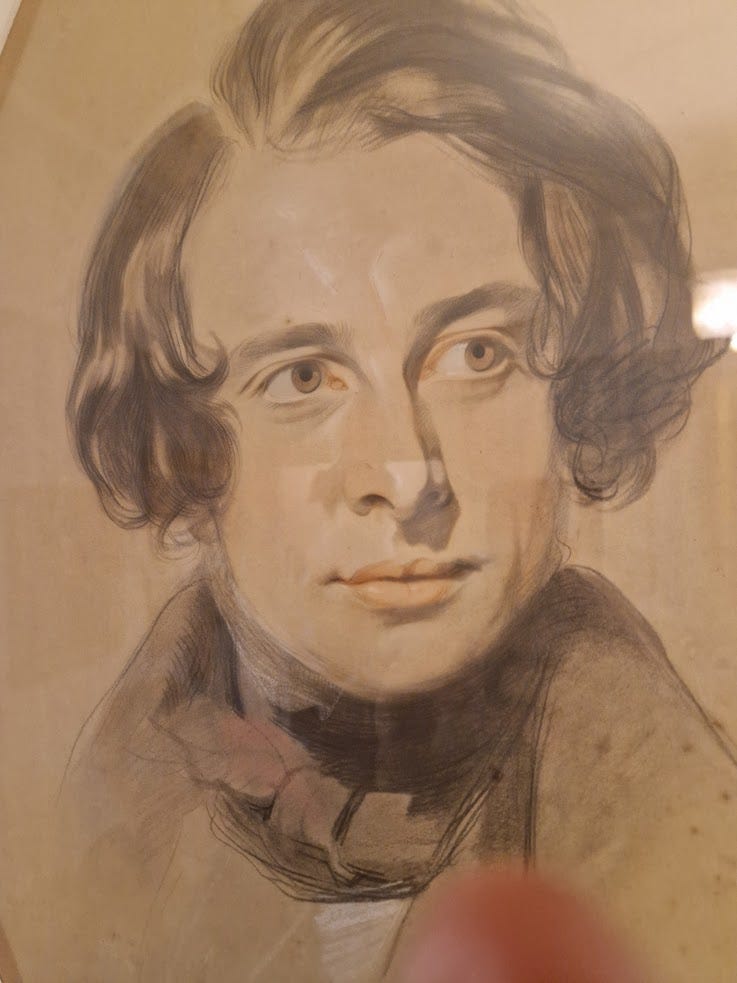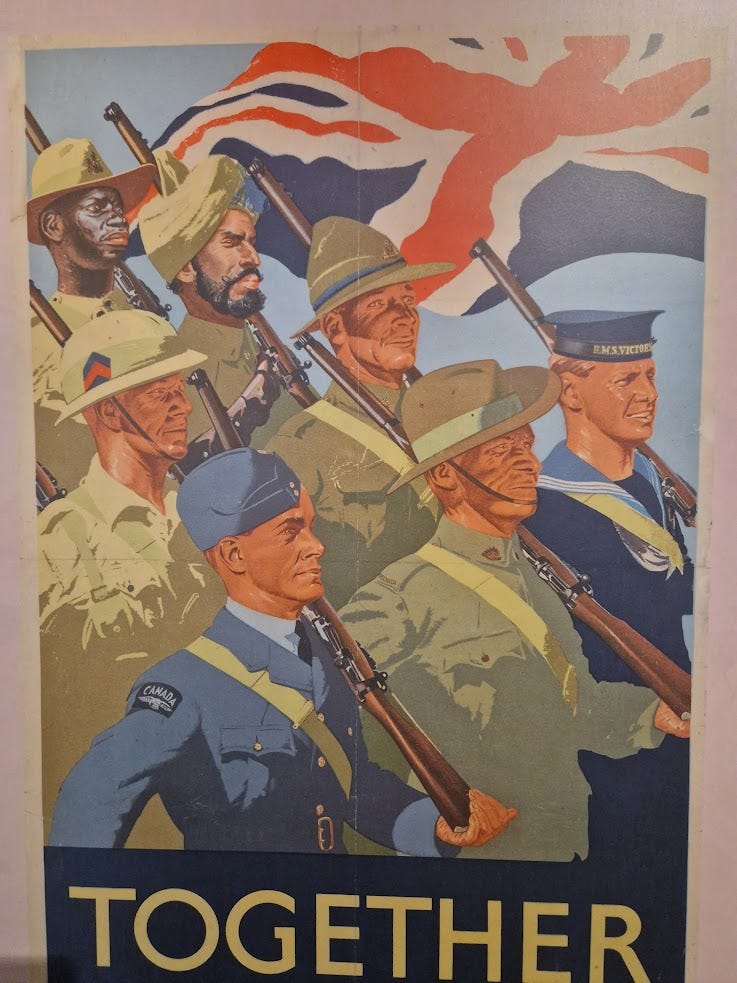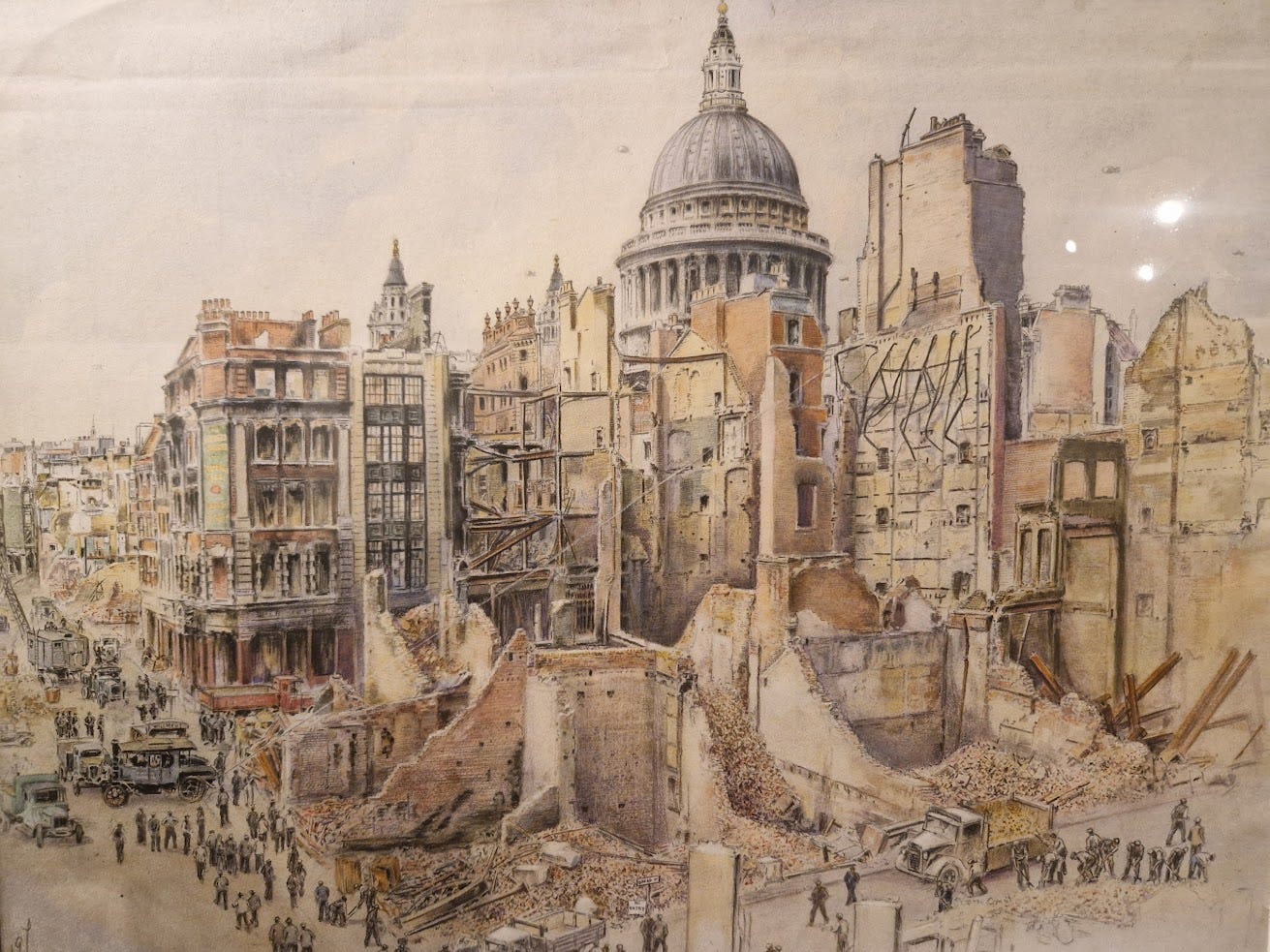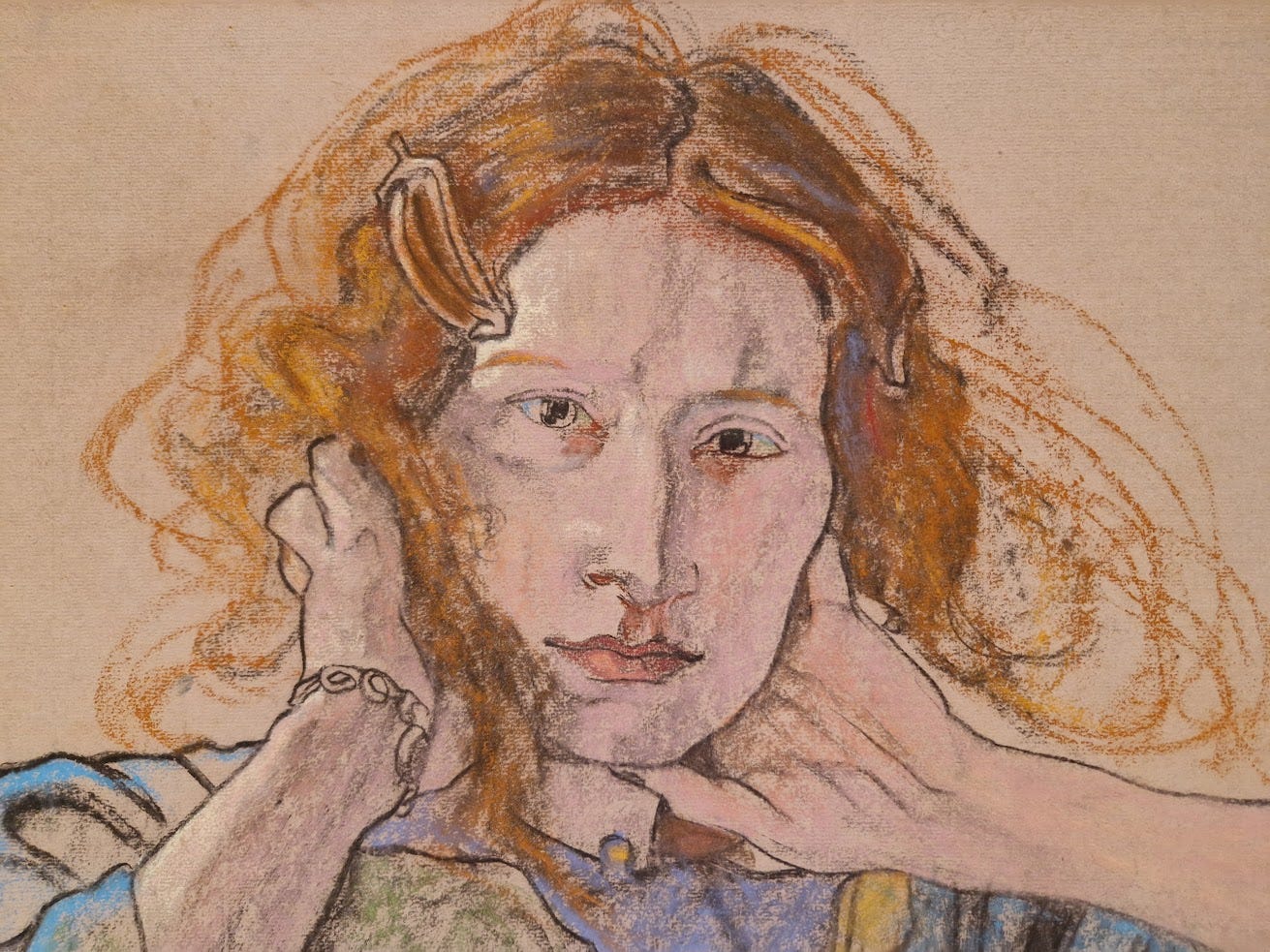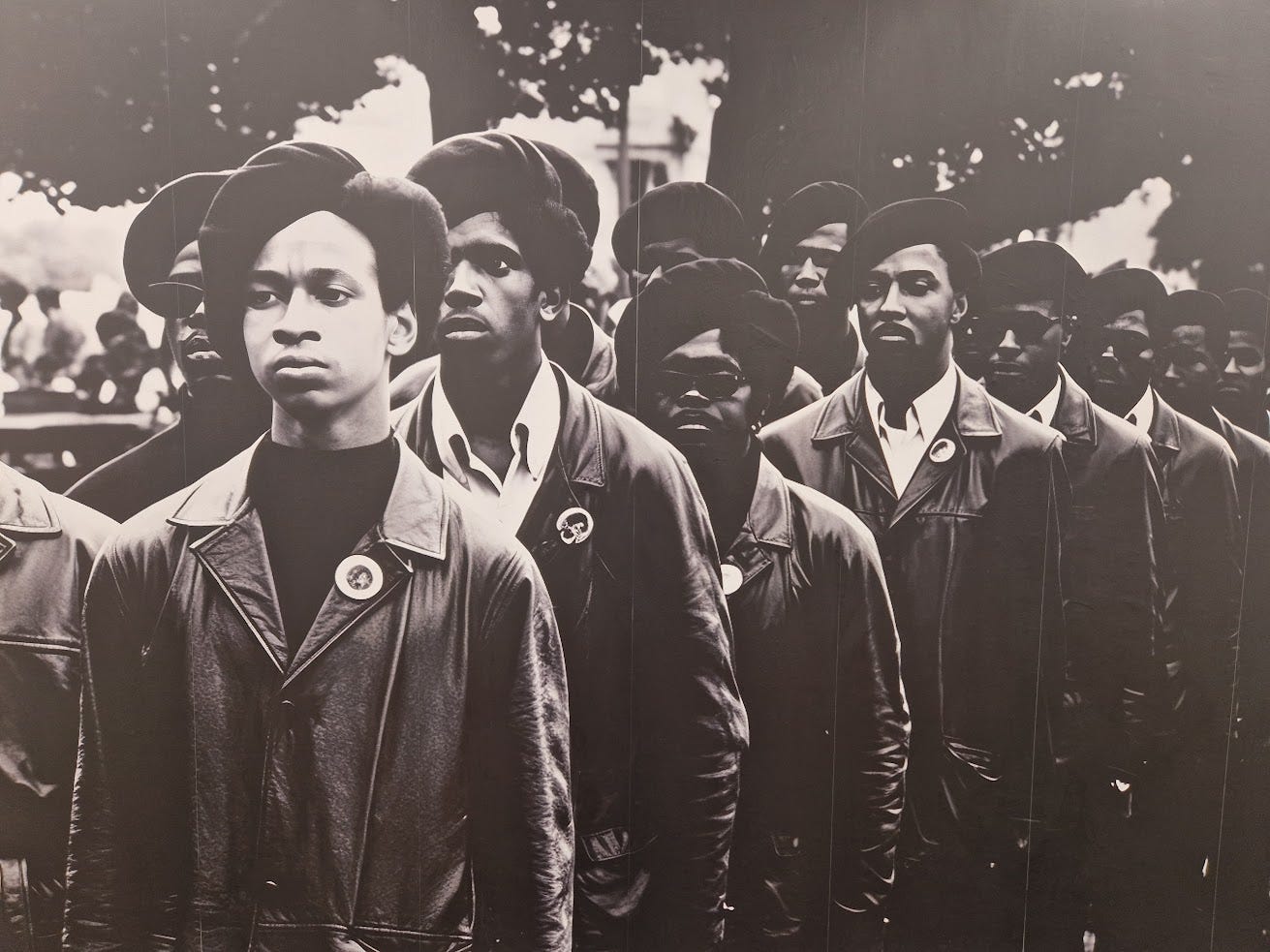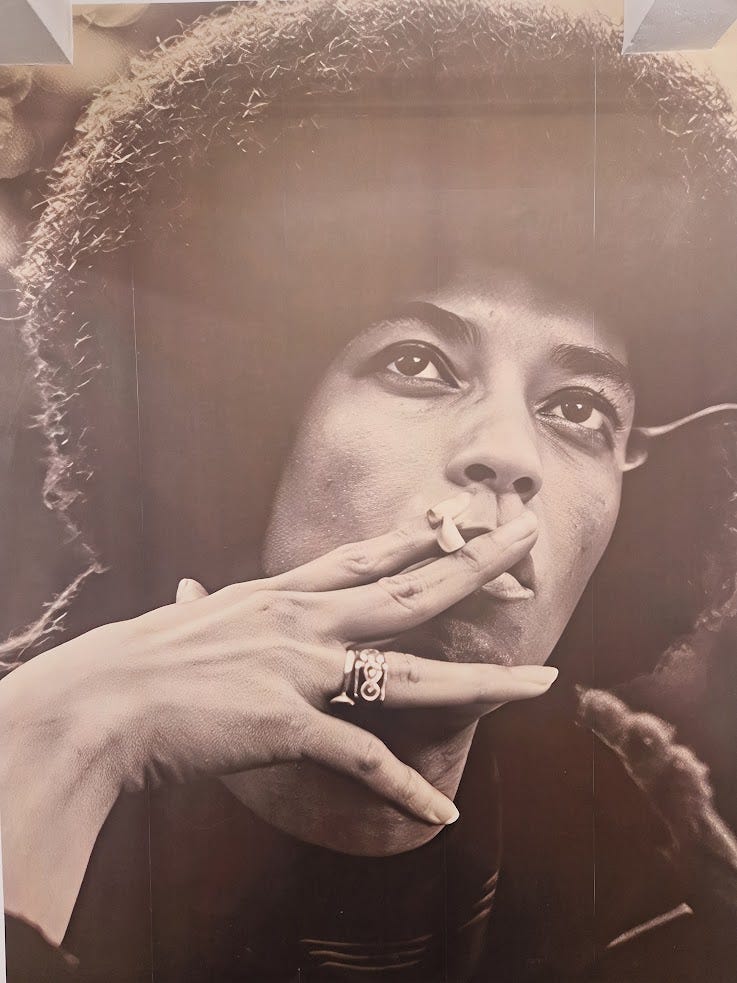MY LONDON LIFE: STUFF I'VE SEEN
EXHIBITIONS OF PHOTOGRAPHY, PAINTING, POLES, PANTHERS & DICKENS
I’m suffering from that horrible goggle eye effect you get after staring at a screen for too long over too many days… Essentially, I’ve been working both on updating Princes Amongst Men for republication in 2026 and a feature on the late, great Clifton Chenier - whose centenary it is today! Happy heavenly birthday, Clifton! - for The Guardian.
The Chenier feature has involved interviewing many, many people, some local Louisiana musicians and others who are quite well known (Mick Jagger… yes, honestly!). Weaving quotes from these myriad interviews together alongside explaining zydeco/Louisiana Creole culture - my editor’s a youthful rap/dance music fan so reminds me I’m not writing for my roots music pals - is a slow, slow business. If I got paid by the hour rather than the word my London life would be easier!
Which is a long assed way of saying I occasionally take a break from staring at the screen by jumping on my bike and going off to see an exhibition. Below are some notes and images from a few I thought worth sharing with my beloved Yak readers.
ARPITA SINGH: Remembering SERPENTINE GALLERY NORTH
I had never heard of Arpita Singh before I entered the Serpentine Gallery North (in Hyde Park). Upon leaving I knew I had encountered a painter of skill and substance, her work ranging from the everyday to the cruelties of war.
Looking on Wikipedia I learnt Singh was born in East Bengal, now lives in New Delhi, and has just turned 88 this week. She’s exhibited widely without seemingly being part of the blue chip elite art scene (where whatever you produce is sold sight unseen to wealthy collectors).
Obviously, Singh is well regarded - you don’t get a major retrospective exhibition in a Hyde Park gallery if not - and her contemporary works, large paintings that focus on war and human frailty and suffering, are some of the most powerful contemporary art I’ve seen in a good while. Her skill in handling paint and ability to engage the viewer make for paintings that resonate. Impressed? Very much so.
Remembering is on until July 27, free entry.
PETER MITCHELL: Nothing Lasts Forever THE PHOTOGRAPHERS’ GALLERY
“Things slip out of life and out of place and the photograph’s role is to fix this bruise of memory.” The quote is from Peter Mitchell, a British photographer whose work I was only vaguely aware of prior to this fine exhibition - Mitchell’s saturated colour images focus on the north of England and convey both the cliche “its grim up North” and the suggestion that amongst urban deprivation people engage in acts of beauty.
Mitchell’s exhibition at the Photographers’ Gallery in Soho is the first comprehensive show of his photos I’ve seen: a room full of his work reinforced what a fine eye he has and his unique sense of colour is. Also: he’s very witty. Not in the sense of laughing at the locals, more is noting the everyday absurdity and joy in our cities. And in the countryside - there are images of bedraggled scarecrows in fields that are as evocative as his cityscapes - Mitchell has such a fine eye.
Mitchell is 83 and focuses on Leeds for most of his photography. He has obviously been a huge influence on Martin Parr, but where Parr tries to show satirical humour in his photos of people, Mitchell is more subtle and graceful. This exhibition closed mid-June and it was a beauty.
Talk about a funky shack! I wish I’d had the opportunity to visit Sir Yank’s Records.
DICKENS IN DOUGHTY STREET: 100 Years of the Charles Dickens Museum
This handsome young man is Charles Dickens around the time he shifted into 48 Doughty Street in London’s Bloomsbury in 1837. He and his wife only lived here for two years because his writing career was so incredibly successful they were able to shift to a larger house.
In 1925 48 Doughty Street was turned into the Charles Dickens Museum and to celebrate its centenary this exhibition is on until June 29. Don’t worry if you miss it, the Dickens Museum is open Wednesday - Sunday 10 am - 5pm (£12.95 adult ticket).
Dickens is undoubtedly London’s greatest chronicler, one whose books continue to be filmed and performed in theatres and, most importantly, read by new readers. He was a master storyteller and created such vivid characters and memorable sentences - his London tales continue to resonate almost two hundred years on.
I believe I’ve written before how seeing Carol Reed’s Oliver! was my first experience of London as a child and its stayed with me ever since. Rather odd then that I’d never previously set foot in the museum dedicated to the great man? I guess, but I’m not that interested in the homes of famous people.
Illuminating the life and works of Charles Dickens and the Museum’s role in preserving his legacy, you’re able to see Dickens’s original manuscripts, letters to friends and family and first editions of his most famous works. There’s also his hairbrush, walking stick and only surviving suit, portraits and photographs made during his lifetime, info’ on his life and travels and the causes he campaigned for.
While observing the knick knacks of a long dead person never strikes me as particularly inspiring, the Dickens Museum is a vast improvement on Graceland. And to think he died aged only 58 yet wrote so many notable books… I stood in awe a.
LONDON IN THE SECOND WORLD WAR THE LONDON ARCHIVES
A shortish cycle from the Dickens museum landed me at The London Archive, a remarkable resource centre for all manner of documents relating to the city known affectionately as “the Smoke”. TLA often has exhibitions drawn from its files and on display until October 30 is London In The Second World War.
This consists of photos and posters and maps and prints all displaying different sides to the city’s survival - I liked the poster above not only for its striking graphics but the way it emphasises the international character of the British forces. Interesting how the Asian and African and West Indian colonies that were called on to provide soldiers and nurses would, once the war was over, be demanding their independence.
I thought this watercolour of bomb damage near St Paul’s Cathedral both beautiful and awful- what had been apartments and shops and pubs all reduced to dust and bones (and bricks - the figures in the foreground appear to be shovelling bricks into the lorry). Just like Gaza today, although London was never totally flattened - even at the height of the Blitz - as Gaza has been.
Open Monday - Thursday 10.00 - 4.30 (7.00 on Wed) and occasional Saturdays.
STANISLAW WYSPIANSKI: Portraits NATIONAL PORTRAIT GALLERY
I’d never heard of Stanislaw Wyspianski until a friend suggested I check out the exhibition of his portraits currently on (free) at the NPG. Turns out this is the first UK exhibition of a man whose brief life (1869-1907) was an extremely gifted one: he being best known as a poet and playwright (his plays are still performed in Poland today) as well as a designer and artist.
The images on display - and there are around two dozen - show an extremely gifted portraitist. He drew his children and friends (the above portrait is of a noted actor) tenderly, or with an element of satire if displeased with the sitter. The final sketch is a self-portrait done three days before he died of syphilis and it is harrowing. Exhibition finishes on July 13.
I’ve made this post free. If you enjoyed reading it please consider supporting my writing by becoming a paying subscriber.
STEPHEN SHAMES: Black Panthers & Revolution AMAR GALLERY
College student and aspiring photographer Stephen Shames was 19 in 1966 when he introduced himself to Bobby Seale, a 30 year old activist who had recently co-founded the Black Panthers with Huey P. Newton. Seale agreed that Shames could photograph the Panthers as they began making their presence in Oakland, California, known by monitoring the police, providing free breakfasts for poor children and other community outreach programmes.
Shames understood how striking the Panthers - in black leather jackets and black berets - looked and many of the images here have a quality akin to those of fashion or celebrity photos: they emphasise how iconic the subject is. Shames was a young photographer here so lacks the wit and imagination found in Peter Mitchell’s work (I wonder if he’s developed it as he aged?). There are strong images in this exhibition, which is held in a dealer gallery: how much a print is I didn’t ask but looking at the images and the tiny amounts of information provided on the wall about the Panthers reminded me of Joe Strummer singing about “turning rebellion into money”.
No doubt Shames is entitled to earn from his images, I just wish more context was provided - what’s on display is largely revolutionary chic ie lush images of militant Black youths from almost 60 years ago, now packaged for wealthy collectors.
The Panthers story has been told many times and it always ends badly - blame can be aimed at the FBI and Governor Reagan and racist police, all of which is partially correct, while it must be noted that Newton, Seale and Eldridge Cleaver (the 3 Panther leaders: Cleaver is entirely absent from this exhibition, reflecting how he was expelled from the Panthers in a clash of egos: how very Stalinist) were extremely flawed, violent men. They had the energy to inspire others and courage to confront the police but were closer in behaviour to gang leaders than civil activists.
Not that Black Panthers & Revolution tells you any of this. I learnt of this exhibition - free entry Fri-Sun until July 6 - by reading a correspondent noting how they went to the opening and found it packed with young, beautiful actors and influencers. When he asked them why they were there the gorgeous ones all gave the same answer: “my agent told me to go.”
Revolutionary chic making a good backdrop for Instagram selfies.
Angela Davis, who remains an activist today - decrying the prison system and Israeli apartheid (alongside other issues, often concerning race an gender) - portrait by Shames.





